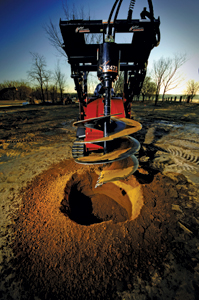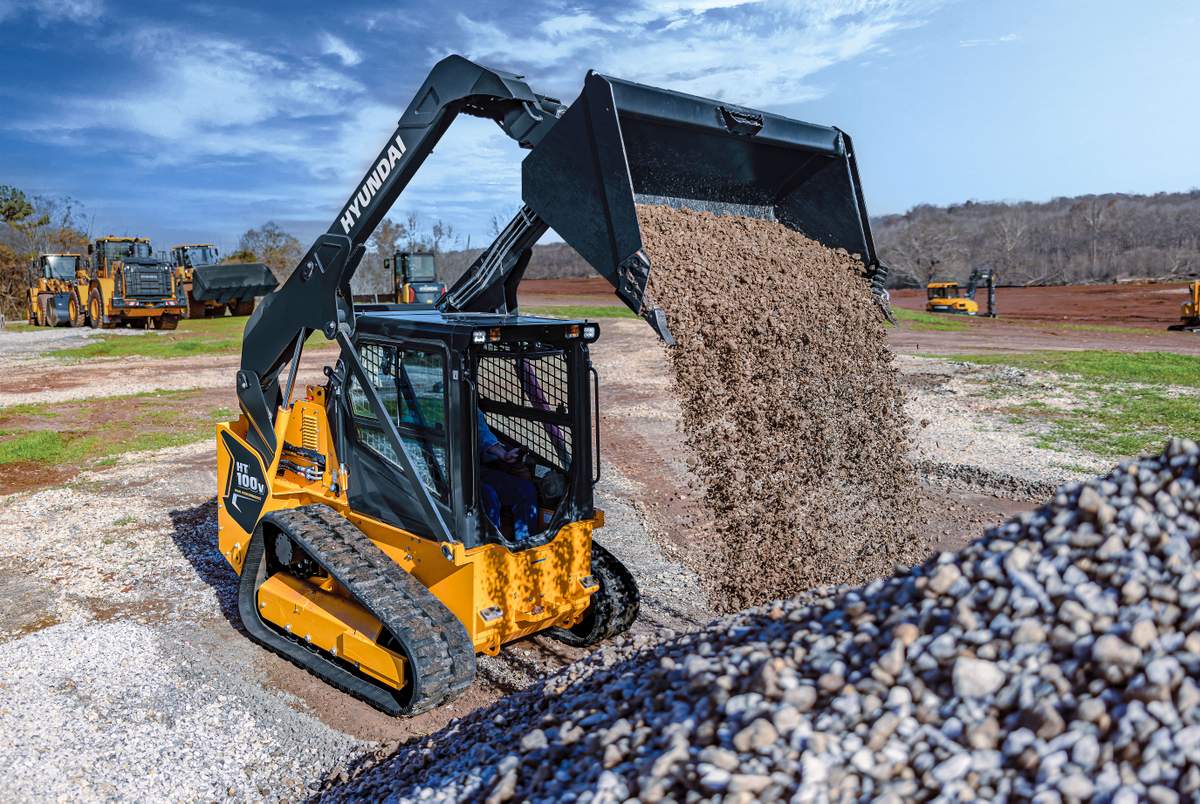Tricks of the Tool Carrier Trade
Contractors need versatile tool carriers. A small piece of equipment like a compact utility loader offers multiple solutions. They perform dozens of tasks with interchangeable attachments, are maneuverable in tight locations, are easy to transport and store and are considered more cost-efficient than most big machines.
 But just as construction and landscape contractors need versatile tools to work day in and day out, machines like compact utility loaders (or CULs) need comprehensive service and maintenance to perform properly. There are many reasons for properly maintaining these versatile machines, too; number one being safety, and number two (by the slimmest of margins) being protection of your investment. Whether you are already an owner or frequent renter of CULs — a.k.a. mini loaders, compact skid steers or mini track loaders — or are simply curious about the appeal of these little powerhouses, we offer this compact guide to the use and maintenance of these multitasking dynamos.
But just as construction and landscape contractors need versatile tools to work day in and day out, machines like compact utility loaders (or CULs) need comprehensive service and maintenance to perform properly. There are many reasons for properly maintaining these versatile machines, too; number one being safety, and number two (by the slimmest of margins) being protection of your investment. Whether you are already an owner or frequent renter of CULs — a.k.a. mini loaders, compact skid steers or mini track loaders — or are simply curious about the appeal of these little powerhouses, we offer this compact guide to the use and maintenance of these multitasking dynamos.
The Market
The evolution of most industries invariably trends toward the smaller and more efficient. The electronics industry is a good example. Look at the steady miniaturization of stereos, calculators, cell phones and computer chips — or the auto industry, with its compact cars. In the underground construction industry, the shift toward more compact, more efficient equipment has been going on for 100 years with the introduction of compact tractors, trenchers, skid steers and mini excavators.
The demand for CULs has been growing steadily ever since — with smaller contractors and companies, in particular — for three equally important reasons. First, a CUL is designed to accept numerous attachments, so any one machine can perform dozens of tasks — trenching, plowing, demolition, grinding stumps, mixing cement — anything the machine has the hydraulic power to do. Their versatility helps the smaller contractor compete with larger companies for business and create more job opportunities. For example, a landscape contractor with a CUL can rent a snow blower and/or snowplow attachment to keep generating revenue during the normally slow winter months.
Second, a CUL can go where a big machine cannot. Most are designed to fit through a standard 36-in. yard gate, so they can easily get in and around backyards and congested urban construction sites. The rise in demand for CULs can be attributed in part to the rise in construction of zero-lot-line homes. They also have the upper hand in retrofitting established neighborhoods with new communications technology or updating utility infrastructure. Not only are these machines more maneuverable than standard-size equipment, they are also considerably lighter, which is important to both the customer and the contractor when the job requires traversing a pampered lawn.
Third, CULs continue to get more powerful and generally more efficient with each passing year. The major manufacturers — including Toro, Vermeer, Bobcat, Compact Power and the Ditch Witch organization — understand the demand for CULs that are more affordable and efficient, and have responded by challenging their engineers to think bigger performance in a smaller package. As these machines continue to improve in hydraulic power, lifting capacity and versatility, their demand can only go up in the increasingly cost-conscious world of underground construction.
CUL-de-Safety

And while he or she marvels at all of the things his machine can do, the operator must at the same time be aware of the limitations of his machine. A CTC’s rated operating capacity is calculated at a certain percentage of its tip capacity. The rated operating capacity of a Ditch Witch SK650 CTC with loader bucket, for example, is 650 lbs (hence its name); this is 35 percent of its tip capacity, slightly less than 1,900 lbs. This is the load an SK650 could handle in reasonable working conditions.
Tracked units like the SK650 are rated at 35 percent of their tip capacity. CTCs with tires are rated at 50 percent of tip capacity. So, a wheeled CTC with loader bucket with a tip capacity of 1,000 lbs would be capable of handling 500 lbs under reasonable working conditions.
Standard safety procedures should be followed when operating any compact tool carrier, including wearing protective clothing and calling 811 before digging. In addition to the equipment manufacturer’s operator’s manual, a Safety Manual for Operating and Maintenance Personnel for Compact Tool Carriers is available from the Association of Equipment Manufacturers (www.aem.org).
|
Lifeblood of Your Loader
It’s Important to Check and Maintain
Three Main Fluid Levels in Your CUL |
| 1. Engine Oil — Make sure the engine is off and the machine is level. The oil level should be between the indicator marks on the dipstick. If the level is below the mark, add oil through the filler to the upper mark. Wait five minutes and then re-check the level. If the level is above the upper mark, drain the excess according to the manufacturer’s recommendations.
2. Engine Coolant — Make sure the engine is off and cold. Turn the radiator cap counterclockwise to the first detent and wait for any pressure to escape. Depress the cap slightly and slowly continue to turn until any remaining pressure is released. If the coolant is within half of an inch of the bottom of the filler neck, the level is correct. If the level is lower than half of an inch, add coolant. Do not add pure antifreeze to a cooling system. Instead, add a 50/50 mix of antifreeze and water. 3. Hydraulic Oil — To obtain an accurate measurement, make sure the machine is on level ground and the cylinders are fully extended. Check the level with either a dipstick or sight glass. If you need to add hydraulic oil, clean the area around the filler before removing the cap. Add hydraulic oil according to the manufacturer’s specifications. |
Maintenance Is a Must

“We recommend, first and foremost, that you get comfortable with everything in the operator’s manual,” says Matt Collins, product manager of compact utility equipment for Ditch Witch. “There are recommended maintenance procedures in the manual that, if followed, will keep the machine operating at peak performance for many years.
“Compact utility equipment is designed with minimal maintenance in mind. Most maintenance and routine repairs can be performed by the operator, but major repairs should only be done by authorized service personnel.”
A CUL is typically operated in dusty, dirty conditions, which makes it essential to keep the inside and outside of the machine clean. Let’s look at the inside first, i.e., the fluids and filters. Here is a summarized schedule of maintenance for a Ditch Witch SK500 compact tool carrier:
| Every 10 hours | Check engine and hydraulic oil levels, hydraulic hoses and air filter |
| Every 50 hours | Clean air filter and check battery |
| Every 100 hours | Change engine oil |
| Every 200 hours | Change engine oil filter |
| Every 250 hours | Change hydraulic fluid filter |
| Every 300 hours | Change fuel/air filters |
These service intervals are typical of most CUL makes and models. The operator’s manual recommends minimum service requirements; in extreme conditions, the machine should be serviced more frequently. Manuals have a checklist that makes it easy to keep track of service.
Keeping the outside of the machine clean and functioning properly is essential for both machine longevity and safety. “Lift arm bushings, operator controls, the operator platform, the track and undercarriage — all of these are important to stay on top of,” says Collins. “The track and undercarriage components are particularly important to the function of the machine. They bear the bulk of the stress these machines endure, so it is vital to check track tension regularly and keep all the components clean.”
Collins emphasizes that adopting a preventive-maintenance attitude is the best way to avoid major problems. “For example, avoid skidding tracks and tires on concrete and asphalt,” he says. The more often you do this, the more rubber you dissolve, and the sooner you will have to replace one of the most expensive components of your CUL.
“Do your homework.” This is the advice Collins gives to anyone preparing to invest in a compact tool carrier. “Make sure it is manufactured by a reputable company and represented by a dealership network that can provide the parts and service when needed. And be sure that the machine has enough horsepower to the attachment to allow it to perform to the best of its ability.”
Jeri Briegge is public relations/advertising manager for Ditch Witch, based in Perry, Okla.
|
Make a Checklist and Inspect Each of the Following Components
It’s Important to Check and Maintain
Three Main Fluid Levels in Your CUL |
| 1. Hydraulic Oil Cooler — Use compressed air to clear debris accumulated in the cores and repair damage if necessary.
2. Hinge and Cylinder Pins — Check for tightness and lubricate daily or more often in extremely dusty conditions. Apply multi-purpose grease to the grease points until it is visible on all sides of the pin and then wipe the excess off with a cloth. 3. Tires and Tracks — For tracks, check for excessive wear, tears and missing tread. Adjust the track tension, so the track does not come off during turning or so that the drive sprocket does not slip in the track during hard usage. Refer to the manufacturer’s maintenance manual when an adjustment is required. For tires, check the tire condition and maintain correct tire inflation pressure, as shown on its sidewall. Check for loose or missing lug nuts as well. 4. Air Filter Housing, Intake Piping, Exhaust Piping and Muffler — Inspect for cracked hoses or pipes, loose or missing clamps, corrosion or punctures and cracked or broken mounting brackets. Tighten or replace parts as necessary to prevent intake and exhaust system leakage. 5. Radiator — On liquid cooled models, look for damage and use compressed air to clear debris accumulated in the cores. 6. Fan/Alternator Belt Tension — Turn off the engine and check the alternator/fan and accessory drive belt(s) for excessive wear, cracking, glazing or fraying. Check the belt tension by applying a 22-lb force midway between the longest distance of the pulleys. The belt should deflect 1/4 to 3/8 in. If the belt tension is not correct, refer to the machine’s maintenance manual for the proper tightening procedure. 7. Engine Cooling Fan — On air-cooled models, examine the cooling fan and surrounding area and use compressed air to clear debris that may have accumulated in the fins and fan. |





Comments are closed here.